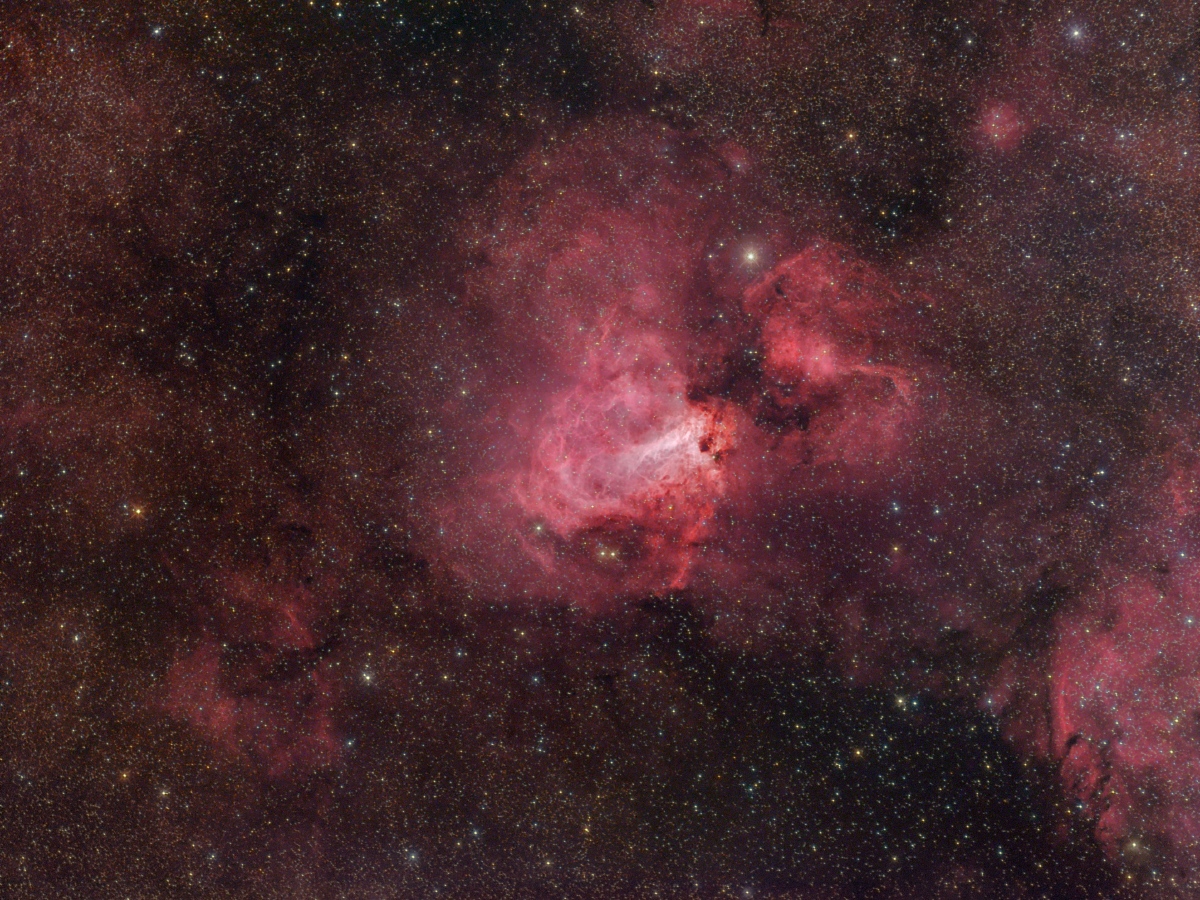
M17, the Omega or Swan Nebula, is a region of star formation and shines by excited emission, caused by the ultraviolet light radiation of young stars which have formed inside the nebula. The main light contribution to the nebula comes from the hydrogen alpha line at 656.3 nm, which causes to nebula to appear in a red color. The pink and nearly white colors near the center are caused by a mixture of emission by the hydrogen and reflected starlight by the dust within the nebula. M17 contains a large amount of dark obscuring material, which is obvious in its remarkable features. The mass of the gas has been estimated to amount about 800 times that of the Sun, more than the famous Orion Nebula M42. While the bright nebula seems to be roughly 15 light years in extension, the total gaseous cloud, including low-luminosity material, extends to at least 40 light years. Modern distance estimates place the nebula at about 5.000 to 6.000 light years.
There are many other emission nebulae in this image. You can find IC 4707 and IC 4706 immediately west, i.e. to the right of M17, IC 4701 (the extended nebula in the lower right section), GN 18.21.0 (faint, in lower left part of the picture) and Sh2-47 (small, in the upper right section of the image) among other, even fainter stuff. The dark lane running through the whole image in north-southern direction is designated LDN 362.
M17 was discovered by de Cheseaux in 1764, and Charles Messier independently observed it and listed it in his famous catalog in the same year. In 1893, Isaac Roberts took the first known photograph of M17 with a 20 inch reflector in a two-hour exposure.
 M17 - Omega Nebula and Surrounding Area, telelens photograph
M17 - Omega Nebula and Surrounding Area, telelens photograph
 M24 - Small Sagittarius Star Cloud and Surrounding Area, telelens photograph
M24 - Small Sagittarius Star Cloud and Surrounding Area, telelens photograph
 M17 - Omega Nebula, Wide Field in Hα, which is part of this image.
M17 - Omega Nebula, Wide Field in Hα, which is part of this image.
 M17 - Omega Nebula, Newtonian CCD image
M17 - Omega Nebula, Newtonian CCD image
Exposure Data